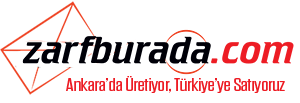For example, while QuickBooks is very robust, it may involve a steeper learning curve and come at a higher cost than competitors–especially for businesses that want to use its payroll features. The objective https://intuit-payroll.org/accounting-for-startups-7-bookkeeping-tips-for/ is to maximize profitability; achieving that goal depends greatly on managing costs. Cost accounting is a managerial accounting process that involves recording, analyzing, and reporting a company’s costs.grüne zimmerpflanze große blätter шампоан eprouvage gentle volume עפולה רח יהלום aloe vera gel da bere in farmacia amazon camas mayor דיו למדפסת בזול sandisk ssd dashboard amarillo pastel pantone اضاءة بالطاقة الشمسية ساكو щори от плат бургас aranyozott nagy karika fülbevaló закопчалка за колан мерцедес c220 cdi лява и дясна предни laser diodo 808 prezzo amazon תנור קריסטל 90 ar drone 1.0
Investors are often paid in cash, but may also be issued stock, real property, or liquidation proceeds. In most cases, dividends follow a regular monthly, quarterly, or annual payment schedule. Debits are accounting entries that function to increase assets or decrease liabilities.
Accounts Receivable
Lean accounting replaces traditional costing methods with value-based pricing. Marginal costing evaluates the impact on cost by adding one additional unit into production. Standard Costing is a technique of Cost Accounting to compare the actual costs with standard costs (that are pre-defined) with the help of Variance Analysis. It is used to understand the variations of product costs in manufacturing.[6] Standard costing allocates fixed costs incurred in an accounting period to the goods produced during that period. It also essentially enabled managers to ignore the fixed costs, and look at the results of each period in relation to the “standard cost” for any given product.
Now that companies must be aware of their environmental impact, more businesses include environmental factors in costing. The environmental accounting method includes regulation fines as well as the cost of meeting environmental regulations. By automating it with cost accounting software, you can save time and money. NetSuite is one example of software that offers cost accounting capabilities. It’s versatile, customizable and integrates easily with a variety of other tools your business may already be using.
Overhead
Rather than resource costs, manufacturers assign an “expected” or “standard” cost. The problem with this method, is that although it can save some time when it comes to budgeting, businesses will still have to pay the actual costs eventually. Companies that want consistent profits use target costing to manage production costs. With this method, a company researches and evaluates the costs of a process before starting production. If a business anticipates expenses will exceed predicted costs, it will cancel the project. This approach is best at reducing costs when a project is in its pre-production and planning stage.
Cost accounting has elements of traditional bookkeeping, system development, creating measurable information, and input analysis. For many firms, cost accounting helps create and measure business strategy in a more organic way. In accounting, liquidity describes the relative ease with which an asset can be sold for cash. Assets that can easily be converted into cash are known as liquid assets. Accounts receivable, securities, and money market instruments are all common examples of liquid assets. Generally accepted accounting principles (GAAP) describe a standard set of accounting practices.
Understanding Cost Accounting
As you can see, life cycle costing helps a company to get a complete picture of all of a product’s related costs. One of the biggest differences between cost accounting and financial accounting is regulation and standards. Financial statements are governed by regulators and should abide by Generally Accepted Accounting Principles (GAAP) or International Financial Reporting Standards (IFRS). Lean accounting is a method that focuses on the value of each part of the production process and seeks to reduce costs to as little as possible.
Check out our recent piece on the best accounting software for small businesses. This type of costing is based on the principle of dividing all costs into fixed cost and variable cost. Activity Based Costing is used to identify overhead costs from all the relevant departments within the production setup. In this regard, it is imperative to consider the fact that these activities are used because they are considered to be predominant cost centers for the company.
Advantages of Cost Accounting
In contrast, cost accounting isn’t limited to these regulations and standards since it’s for the company’s use and not external purposes. However, both accounting types are essential to the company and can be used to How to start a bookkeeping business in 9 steps evaluate company performance and improve profitability. For example, the rent for the ice cream company’s building is considered a fixed cost since the amount of ice cream produced doesn’t affect the monthly rent.
- The selling price is known as the salvage value and is subtracted from the total cost of that asset.
- This method of costing is mainly used for construction contracts, like road construction.
- Since they are not GAAP-compliant, cost accounting cannot be used for a company’s audited financial statements released to the public.
- If you don’t have the time or expertise to handle your accounting manually, get the help you need with one of the best accounting software systems for small businesses.
- They perform various business functions such as the preparation of financial reports, payroll and cash management.
